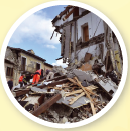Lightning
1. ...................................................................
People say that lightning never strikes the same place twice. Perhaps this is true, but lightning can certainly strike the same person more than once. It struck Roy Sullivan seven times between 1942 and 1977. In fact, lightning strikes approximately 2500 people every year. A surprising fact is that more than 90% of those people survive their 100-million-volt experience.
2. ...................................................................
Some of these survivors meet every year at a conference in the United States and talk about their experiences. Steve Washburn, for example, was working in an office and was near a metal window when lightning struck him. He wasn’t touching the window, but he had a metal object in his hand. Later, he remembers, people were looking at him, but they didn’t want to touch him because they were frightened. Arnold Hanson, another victim, was walking in a field when lightning struck him and lifted him forty-five centimetres into the air. Dale, his twelve-year-old son, was watching and ran to help his father.
3. ...................................................................
Scientists and doctors go to the conference and talk about the effects of lightning on the human body. Many victims have physical and psychological problems after their experience. They are often depressed and can’t sleep or sometimes remember things. The victims’ hair usually goes white some time after the shock, and sometimes there are some weirds effects. A man called Harold Deal, for example, is famous because he can’t feel the cold after his experience.
4. ...................................................................
The best way to avoid these problems is to avoid lightning. Normally people are outside when lightning hits them. Therefore, if there is a storm, stay indoors. If you are outside, don’t stand near tall structures or metal objects. Lightning often strikes metal, and it always hits the tallest structures first.

